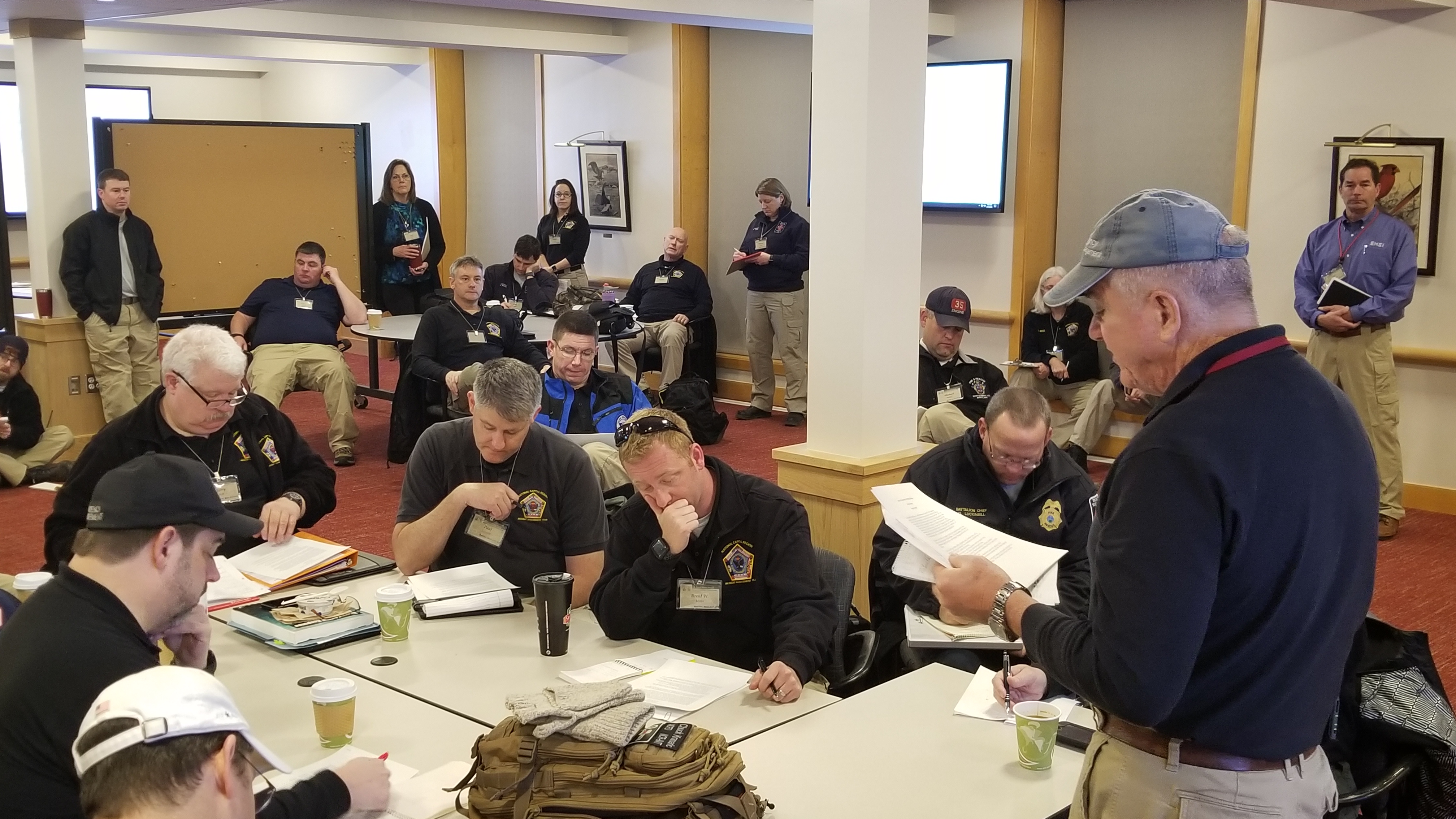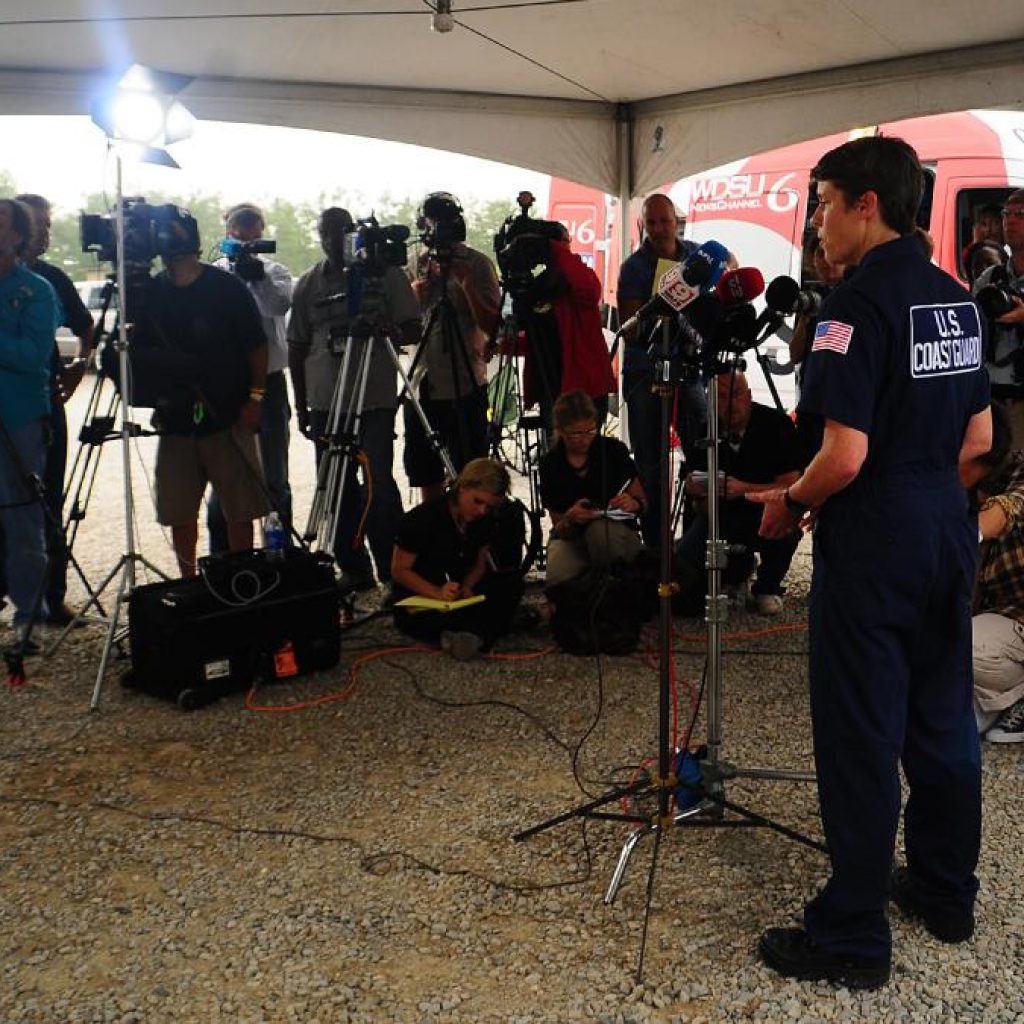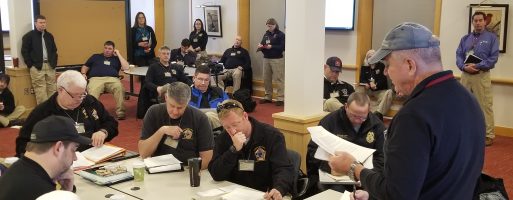As the response spectrum has grown increasingly complex, leaders in the response spectrum today are required to engage with, influence, and lead a greater number of followers, peers, supervisors, and stakeholders to accomplish objectives, reach the end-state, and achieve a position outcome. In this regard, to adapt the quote from Admiral Allen, response spectrum leaders not only “have to lead from everywhere”, but they have to lead everywhere.
As part of this development, EMSI believes that there are five types of leaders in incident management today. With the size and complexities of incidents continually increasing, it is not enough to just be able to manage an incident and its organization. You have to also be able to manage the responders, both boots on the ground and the leaders who direct them. In order to accomplish this, Multi-Dimensional Leadership is needed.
Multi-Dimensional Leadership is grounded in five levels of leadership, consisting of:
- Leaders of People
- Leaders of Leaders
- Leaders of Organizations
- Leaders of Effort
- Leaders of the Outcome
Before we discuss these levels, it is necessary to highlight who the leader is leading: the follower. Without followers, there would be no leaders. Those in the role of the follower have a number of responsibilities, including to:
- Become competent in basic job skills
- Take initiative and learn from others
- Ask questions and communicate
Regardless of what level of leadership we discuss below, leaders will always have followers and leaders will always need to:
- Communicate a clear vision and end-state to their followers
- Be mindful of the challenges their followers face
- Respect their followers
Leaders must recognize that they may have leaders among their followership, especially as they advance through the levels of leadership. As leaders evolve to become leaders of effort and leaders of the outcome, they are advancing into the realm of “meta-leadership”*, leading beyond their formal authority and responsibility.
Leaders of People
The first level of Multi-Dimensional Leadership is the Leaders of People. Leaders of people lead small groups and teams. As leaders, they accept responsibility, not only for their own action, but for those of their team. Leaders of people act to develop credibility as leaders; they place the team ahead of themselves, demonstrate trustworthiness, master essential technical skills, and instill the values of the organization in their teams. Leaders of people often receive direction from higher-level leaders and must communicate up, as much as they communicate down.

Leaders of Leaders
The second level of Multi-Dimensional Leadership is the Leader of Leaders. In the modern-day response spectrum, leadership may not necessarily reside with one person or in one position. Response organizations can grow such that leadership responsibilities are distributed throughout the organizational hierarchy. Response can also be geographically distributed, physically separating the leader from the followers, as well as other leaders.
For a leader of leaders, the distance between the leader and the led increases the challenges of leading. Subordinate leaders frequently work in other locations, so face-to-face communication is not always possible. The circumstances for building trust are more complex; but even so, the trust must with stand the pressures of time and distance, enabling leaders to confidently communicate intent and delegate responsibility, empowering leaders to lead. These leaders act as a conduit between the organization and the people on the ground, interpreting the vision into mission, translating abstract ideas so that subordinate leaders can take definitive action.
Leaders of Organizations
The third level of Multi-Dimensional Leadership is the Leaders of Organizations. Typically comprised of the most senior of leaders, Leaders of Organizations, while they may derive their power from a number of power sources, derive significant power and authority to lead from their position (position power). For leaders of organization, the challenges grow to thinking more strategically and looking both more broadly and further ahead. These leaders manage and lead through the most complex, high-profile, and consequential emergencies.
Organizational leaders plan for future operations as well as mentor promising people for key roles in the organization. They may represent the face, or the authority, of the response to responders, cooperators, stakeholders, and the public. Their actions and decisions have significant and far-reaching effects, and the responsibility they carry is great.
Leaders of Effort*
The fourth level of Multi-Dimensional Leadership is the Leaders of Effort. Leveraging expert power, leaders of effort work to harmonize unity of effort among multiple organizations working towards a similar objective. Leveraging the positive command climate they have established within their direct area of responsibility and formal lines of authority, the leader of effort, with little or no authority or position power to lead beyond their direct responsibility, broadens their sphere of influence by convincing others to trust and follow them, and join their effort. This prevents organizations from working incongruently and reduces duplication and friction points. Through shared priorities and objectives, multiple organizations can achieve a unity of effort under the leader of the effort to achieve more.
Leaders of the Outcome*
The fifth level of Multi-Dimensional Leadership is the Leaders of the Outcome. Leaders of the outcome are “leaders without borders”; they are mindful of, but are not hindered by, lack of formal authority or responsibility. They have a clear vision of what “right” looks like and the positive end-state, and they directly, or indirectly, influence action towards that end-state, with or without formal authority or responsibility. Leaders of the outcome are able to galvanize a diverse range of followers, including other leaders, peers, cooperators, stakeholders, superiors, and the public, to believe in a shared vision and end-state and contribute to a positive outcome.

Leaders of the outcome navigate through diverging missions, competing priorities and objectives, political pressures, external influences, human factors, ethical dilemmas, bureaucracy, jurisdictional boundaries, and legal constraints. Leading way beyond their formal lines of authority and responsibility, leaders of the outcome lead outside of the boxes and lines, through the stovepipes, across functional areas, and between levels of government and private sector/non-governmental entities, transcending the overall response organization, to achieve a positive outcome.
*Meta-Leadership – An Enhanced Capacity to Lead
Leading in the response spectrum requires a heighten capacity for effective cross-government coordination of effort as well as cross-sector collaboration with private and non-profit organization. This objective can be hindered by the tendency of some leaders to maintain an incomplete common operating picture and understanding of the overall incident and advocate for the specific interests and purposes of their narrow silos of activity.
Meta Leaders think and perform differently. By taking a holistic view, they intentionally link and leverage the efforts of the whole of community to galvanize a valuable connectivity that achieves unity of purpose and effort. Leaders of Effort and Leaders of the Outcome demonstrate characteristics of Meta Leaders.
Conclusion
We all train and exercise how to best manage the incident, but what are you doing today to prepare for leading your responders? Leading responders can be as important as managing the incident, as we know that having the right people in the right places can significantly improve the odds of success. EMSI has taught the concepts of Multi-Dimension Leadership as part of incident management curriculum over the years and can bring those concepts and experiences to your teams. Contact us today to learn how we can help your organization prepare for your incidents and events.
EMSI is a service-disabled veteran owned minority business enterprise (MBE) that supports a broad range of clients. To learn more about EMSI and how we can help your organization’s response preparedness, please visit www.emsics.com.


